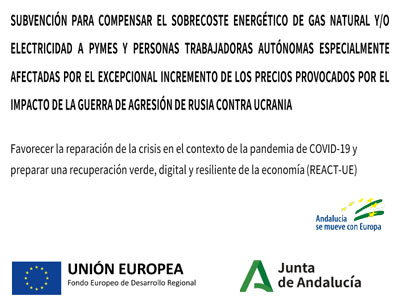As know-how continues to evolve, the synergy between edge and cloud computing will undoubtedly form the subsequent frontier of digital transformation. If you’re able to embrace edge and cloud computing and all of what these technologies provide, Digi can make the method seamless. Each cloud and edge computing can considerably reduce prices, however they achieve this through completely different mechanisms tailor-made to particular operational wants. Each edge and cloud computing architectures provide scalability, though in numerous dimensions, facilitating tailored responses to diverse https://www.globalcloudteam.com/ technological calls for. Two prominent applied sciences, edge computing and cloud computing, have emerged as pivotal gamers in this quest.
To conclude, the relationship between cloud and edge computing is driving innovation in IT infrastructure, providing companies tailored options to meet trendy calls for. Hybrid cloud and edge computing combines cloud environments’ computational energy and storage capabilities with the real-time processing and localized information dealing with of edge gadgets. This approach permits for the distribution of workloads based on latency, bandwidth, and data privacy requirements.
The future lies in leveraging each cloud and edge, not choosing one over the other. With edge computing becoming important, it’s additionally essential to be certain that the edge devices themselves don’t turn into a single level of failure. Network architects must build redundancy and supply failover contingencies to provide crippling downtime in the event of a primary node failure. The trade has come a protracted method to meet the demands of edge computing, and it’s changing into mainstream.
Instead of sending every thing to distant cloud servers, firms are bringing computation nearer to the place data is generated. This shift permits for quicker processing, lower latency, and larger security, making it essential for industries that rely upon saas integration real-time analytics, AI applications, and IoT networks. This mannequin allows users to access functions, storage, and processing power without having on-premises infrastructure.
- Cloud computing has revolutionized the finest way we store and course of information, providing centralized solutions that present scalability and suppleness.
- It empowers organizations to access huge computational assets and storage without the necessity for extensive on-premises infrastructure.
- For example, the cloud can deal with storage and content material administration, whereas edge servers carry out tasks like encoding and edge caching for video delivery to native viewers.
- This model offers users with quick access to software functions with out the necessity for local installations, enhancing productivity and collaboration.
If you’re able to optimize your corporation with edge computing, contact us right now to explore how OTAVA may help you keep ahead in 2025. To learn more about how Verizon skilled companies may help you construct the ideal edge architecture to help meet your business wants. Smart SpeakersSmart audio system acquire the ability to interpret voice commands locally and execute fundamental instructions. Even if the web connection goes down, one can adjust the thermostat settings and turn the lights on or off.
Enterprise Edge
One of the main benefits of edge computing over cloud computing is its ability to reduce back community congestion and latency. This can lead to sooner response times, lower latency, and extra efficient use of network assets. In distinction, edge computing adopts a decentralized technique, bringing knowledge processing nearer to the source or end-user. This approach reduces the necessity to edge computing examples transmit large datasets across networks, thereby minimizing latency and bandwidth utilization.

Microsoft’s Azure IoT Edge permits businesses to deploy AI-driven analytics, machine learning fashions, and cloud workloads instantly at the edge. It integrates with Microsoft’s cloud ecosystem, providing real-time data processing whereas sustaining safe cloud connectivity. Edge computing and cloud computing are two well-liked paradigms on the planet of computing.
Edge computing in healthcare permits crucial purposes like distant patient monitoring and medical imaging to handle information instantly at the edge. This functionality ensures well timed interventions and enhances patient care by providing healthcare professionals with real-time insights. These benefits highlight the versatility and efficiency of edge computing, making it a valuable addition to fashionable computing infrastructures.
Processing data at the edge allows companies to improve response occasions and unlock new automation capabilities. In phrases of their relationship, edge computing and cloud computing are complementary applied sciences that work collectively to offer end-to-end computing services. Edge computing and mobile connectivity enable edge units to function successfully even with restricted or intermittent internet connectivity. This is essential in distant areas or situations the place fixed connectivity to a central server is challenging or costly. Edge computing’s capability to course of and store knowledge regionally ensures applications stay operational regardless of network standing. Exploring the dynamic between edge computing vs cloud computing reveals a spectrum of capabilities that cater to totally different technological needs and scenarios.
Industries similar to finance and healthcare depend on cloud computing for big data analytics. By harnessing the cloud’s computational sources, these sectors can analyze large datasets and derive AI-driven insights, enabling knowledgeable decision-making and strategic planning. To grasp the evolving landscape of recent computing, it’s important to know the basic differences between edge and cloud computing. Each paradigms supply distinctive benefits and serve distinct purposes in today’s digital infrastructure. Fog computing has several distinctive traits that make it a beautiful possibility for organizations trying to process information in real time. In work environments the place defective tools could result in injuries, IoT sensors and edge computing may help hold people protected.

Calls For for high-quality stay and VOD content continue to rise, putting strain on OTT suppliers to find new ways to deliver buffer-free viewing experiences. Utilizing edge computing for OTT and reside video delivery supplies an answer for the frequent problems with latency, low decision, and scalability. An endpoint is any system that connects to a computer community and exchanges information, like a laptop.
Sensors embedded in machines gather knowledge, and edge units course of this data to provide instant suggestions. Wearable devices, such as smartwatches or medical sensors, acquire huge amounts of data, including heart rate and glucose ranges. Traditionally, all this information could be sent to the cloud for processing, but that may take time and can be a safety risk.
Types Of Edge Computing Technology
It is a form of a hybrid cloud deployment mannequin that enables edge devices — similar to IoT gadgets and autonomous vehicles — to run workloads in the cloud and on edge servers as needed. Delivering high-definition video globally is bandwidth-intensive and costly. Since the sting network’s nodes are nearer to the top consumer, the overall demand for more bandwidth is lower, decreasing costs as properly. Using edge computing can lead to noticeable value savings for video streaming suppliers, even during high-demand occasions with massive audiences. This decentralized method to data processing is making the live-streaming OTT video expertise even better for audiences. With edge computing, knowledge processing occurs nearer to the viewer, chopping down on latency and scalability issues that affect streaming quality.
Edge computing is a decentralized computing model that brings information processing closer to the gadgets and sensors that generate it. Fog computing, on the other hand, is a distributed computing model that extends the capabilities of edge computing to a bigger network of units and sensors. In edge computing, data processing happens immediately on the supply the place it’s created. On the other hand, fog computing acts as a mediator between the sting devices and the cloud. This intermediate layer offers extra processing and filtering of knowledge earlier than it is despatched to the cloud, thus optimizing bandwidth and storage needs. Then, you’ll find a way to determine optimal areas for edge nodes near end-users in high-demand areas.
In this hybrid model, knowledge flows from the sting, the place it is generated and initially processed, to the cloud, where it may be further analyzed and integrated into broader applications. When exploring cloud computing vs edge computing, it’s crucial to acknowledge their basic variations in design and functionality. Each technology presents benefits and presents specific limitations that may influence deployment scenarios.



Leave a Reply